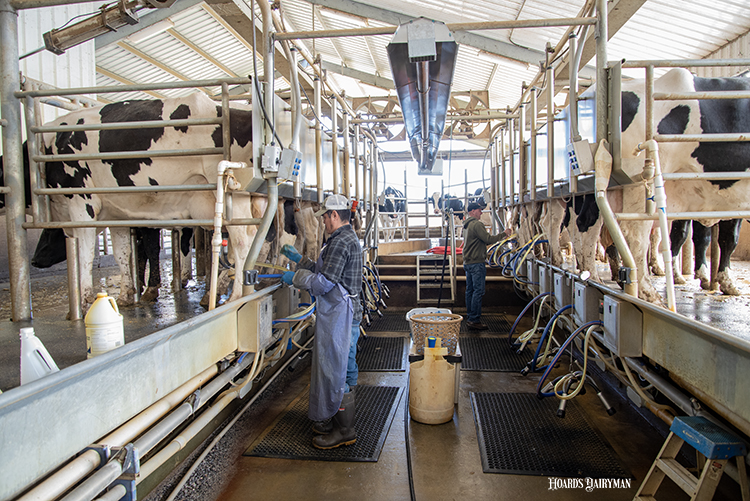
Workplace culture, employee engagement, appropriate resources, and supervisor trust are just some of the factors that affect how long people remain at your business and how you retain employees. Where all of those areas begin, though, is in hiring the right type of person in the first place for the job being filled.
It’s true that many positions on a dairy are teachable, maybe even for individuals with no previous dairy experience. People are adaptable. But to get the type of person you want working on your farm for a long time, Michael Hoffman of Igniting Performance Inc. advised identifying four areas for each position that will help you differentiate between what is needed now and what can be taught.
At the Professional Dairy Producers (PDPW) Business Conference, Hoffman framed this as thinking about the hiring process through the lens of the employees you have now. Is there one person you wish you had 100 of? This provides a template for you to begin identifying and sorting through candidates.
When you have a job opening, its intuitive to first identify the knowledge needed for the position. What will a candidate need to know to be successful? These details should show up in your recruiting materials so you attract qualified people. This is an important area to consider what you are willing to teach and what baseline information the position will need on day one. You may prefer an applicant for the maternity barn to be able to identify disease, or you may be willing to spend time training them.
Knowledge base differs from the skills of a successful applicant. What will they need to be able to do? This might include operating specific equipment or knowing how to use certain software programs. Hoffman noted this is another area where training can be a consideration.
His final two areas are more abstract and may require more thought when forming a job description: what are a successful candidate’s attributes and motivations? In other words, what do you need to be and what do you need to like?
“Attributes are one of the least looked at areas in hiring, but it can be the most important,” the leadership development coach said. This is where you are able to put the right person in the right job because certain positions require certain personality traits, which are not trainable. For example, someone working with calves will need to be patient. Endurance is another trait farm employees will need to have.
Hoffman said you can get a sense of an applicant’s attributes by practicing behavioral-based interviewing. Ask for examples and listen for their philosophies. “Tell me stories and I’ll get an idea of the person you are,” he explained. You might also consider taking them on a tour of the farm or having them meet potential co-workers during an interview to get to know them more.
Finally, a person’s motivations can make or break how long they stay with you. The number one reason people leave a job is because they simply don’t like it, Hoffman said. Employers can help prevent that by laying out what an applicant will need to enjoy — and not enjoy — from the beginning. For example, farm employees will generally need to be okay with working outside, occasionally with sick animals, and in problem-solving scenarios. If that’s not who the candidate is, they aren’t the right person for the job. Hoffman said the best way to get an accurate picture of necessary motivations is by asking the people currently in the position.
When an employer is aware of the knowledge, skills, attributes, and motivations needed for someone to be successful in a position and lays them out for applicants, it can cut down on time spent with the wrong candidates and help them hire people more likely to stay in the position. Clarity in job descriptions benefits both employers and employees.








